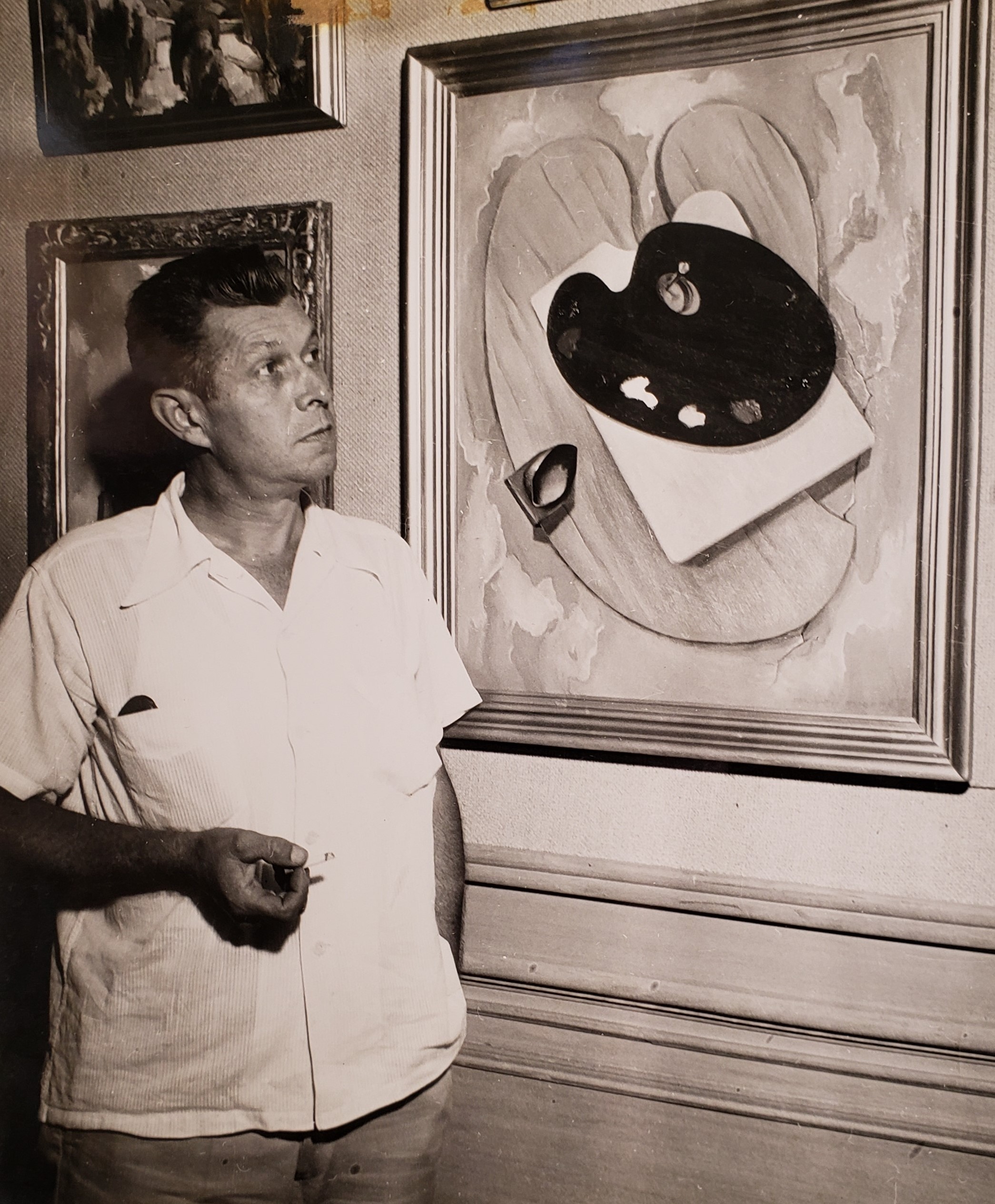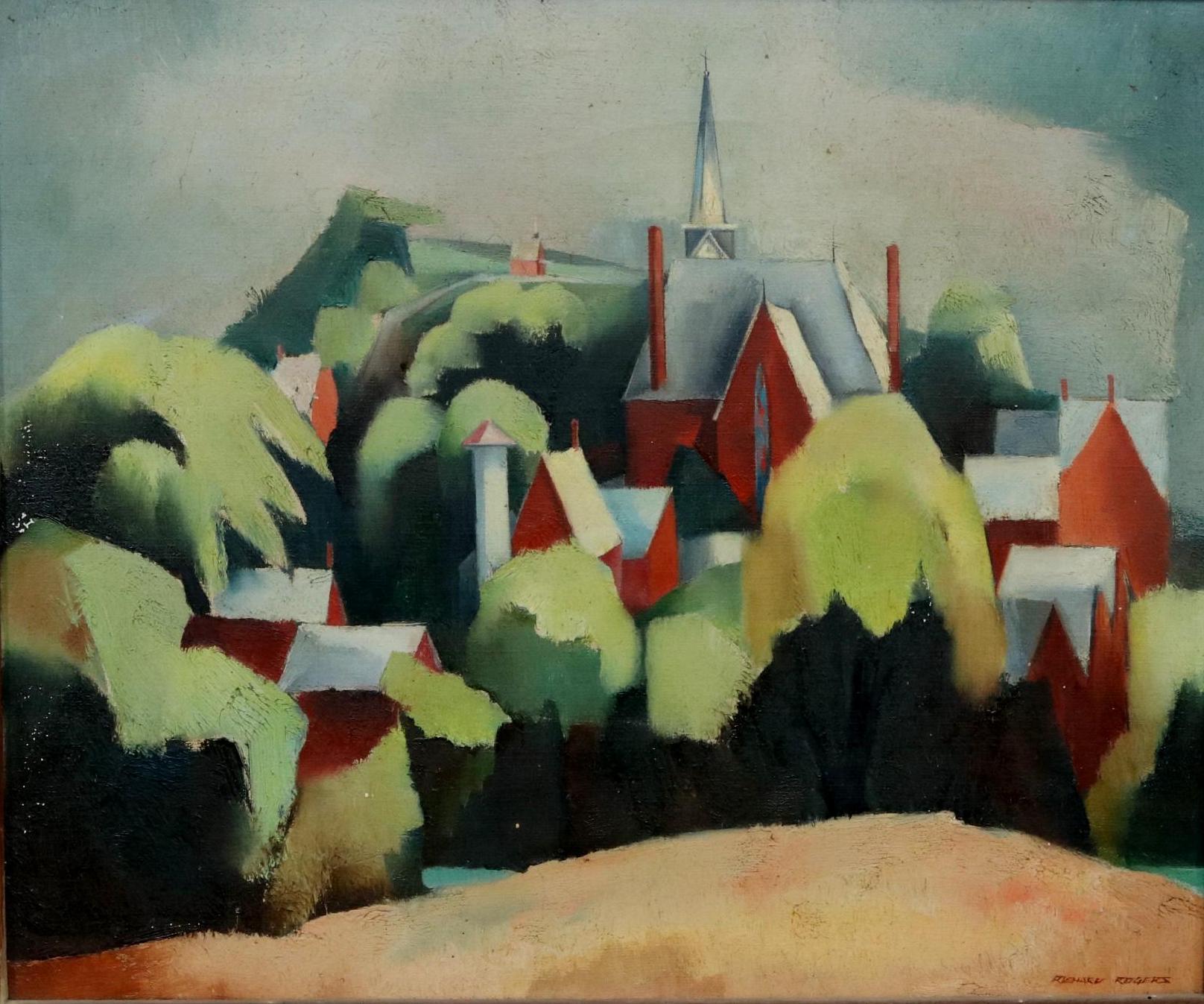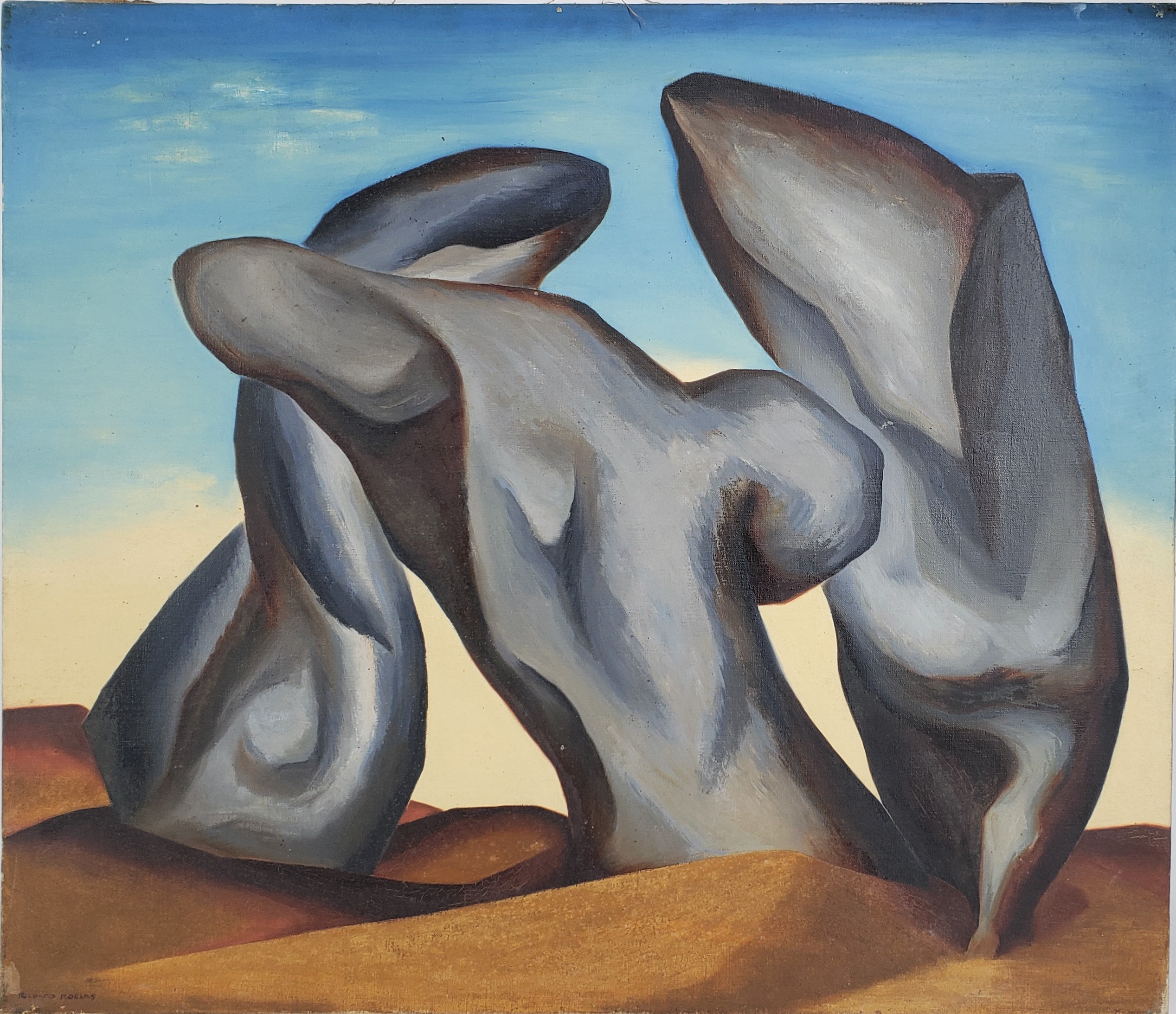
Richard Rogers |
Richard Rogers (1903 – 1967) was part of the development of American Modernist art in the early 20th century. Throughout his career, he experimented with a variety of genres including Fauvism, Cubism, Expressionism, and even Abstract Expressionism. His strong use of colors and sometimes distortion of perspectives and forms highlight his artistic training by famous painters such as Arthur Carles and Hugh Breckenridge. Rogers graduated from Phoenixville High School and attended the School of Industrial Art in Philadelphia where he met fellow art student and future wife, Mary Bean. The two also studied at the Pennsylvania Academy of Fine Arts under the instruction of Arthur Beecher Carles, Jr. He and his wife spent several summers as students in Gloucester Mass. at the Breckenridge School of Art under the instruction of Hugh Henry Breckenridge. Being a direct descendent of prominent Swedish, Welsh Quaker and Silesian Schwenkfelder founders in Pennsylvania, Rogers had a deep-rooted interest in local Pennsylvania history. He and his wife Mary purchased the historic Daniel Heister homestead in Sumneytown, Pa where they lived for many years. Rogers taught painting throughout the area and at the historic homestead, sometimes setting his classes up around the picturesque grounds. Along with his wife, his paintings were exhibited throughout the major art centers of the East Coast. He was featured in the New Hope Art and Literature catalog and exhibited at the Boston Society of Independent Artists Annual Exhibit. He also taught classes in Fine Arts at the Chestnut Hill Creative Art Studio. Rogers passed away at the young age of 64. His artwork has been kept away from the public’s eye for almost 30 years. Alderfer Auction is proud to present pieces of his repertoire in their Fine Arts Auctions. Take advantage of this opportunity to own a piece of work by this missing puzzle piece of an artist whose studies and influence helped trailblaze the artistic movements from impressionism to modernism.
|












